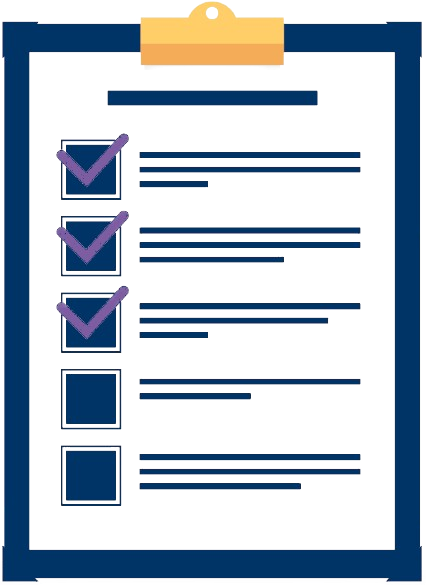Suggestions based on the Question and Answer that you are currently viewing
1. What is the significance of the slope of the line ac in the top part of Figure 6.1? 2. Given that there is a fixed supply of land in the world, what implications can you draw from Figure 6.1 about the effects of an increase in world population for food output per head?
The financial statements of P&G are presented in Appendix 5B. The company’s complete annual report, including the notes to the financial statements, can be accessed at the book’s companion website, www. wiley.com/college/kieso. Instructions Refer to P&G’s financial statements and the accompanying notes to answer the following questions. (a) What kind of pension plan does P&G provide its employees in the United States? (b) What was P&G’s pension expense for 2011, 2010, and 2009 for the United States? (c) What is the impact of P&G’s pension plans for 2011 on its financial statements? (d) What information does P&G provide on the target allocation of its pension assets? (Compare the asset allocation for “Pensions and Other Retiree Benefits.”) How do the allocations relate to the expected returns on these assets?
Dan has AGI of $50,000 and paid the following taxes during this tax year. Calculate how much Dan can deduct for taxes as an itemized deduction this year.
What is service cost, and what is the basis of its measurement?
The specified dimension = 225.00 mm for a certain injection molded part made of ABS. Compute the corresponding dimension to which the mold cavity should be machined, using the value of shrinkage given in Table 13.1
Question: Lorenzo is considering starting a trucking company either in Texas or Oklahoma. He will relocate his family, which includes his wife, children, and parents, to reside in the same state as his business. What types of taxes may influence his decision of where to locate his business?
The surface finish specification in a turning job is 0.8 µm. The work material is cast iron. Cutting speed = 75 m/min, feed = 0.3 mm/rev, and depth of cut = 4.0 mm. The nose radius of the cutting tool must be selected. Determine the minimum nose radius that will obtain the specified finish in this operation.
Alabama Corporation, an S corporation, liquidates this year by distributing a parcel of land to its sole shareholder, Mark Ingram. The fair market value of the parcel is $50,000, and its tax basis is $30,000. Mark’s basis in his stock is $25,000.
How is isostatic pressing distinguished from conventional pressing and sintering in PM?
Evaluate the following statement: “When dividends and long-term capital gains are taxed at the same rate, the overall tax rate on corporate income is the same whether the corporation distributes its after-tax earnings as a dividend or whether it reinvests the after-tax earnings to increase the value of the corporation.”
{Research} Ralph owns a building that he is trying to lease. Ralph is a calendar-year, cash method taxpayer and is trying to evaluate the tax consequences of three different lease arrangements. Under lease 1, the building rents for $500 per month, payable on the first of the next month, and the tenant must make a $500 security deposit that is refunded at the end of the lease. Under lease 2, the building rents for $5,500 per year, payable at the time the lease is signed, but no security deposit is required. Under lease 3, the building rents for $500 per month, payable at the beginning of each month, and the tenant must pay a security deposit of $1,000 that is to be applied toward the rent for the last two months of the lease. a. What amounts are included in Ralph’s gross income this year if a tenant signs lease 1 on December 1 and makes timely payments under that lease? b. What amounts are included in Ralph’s gross income this year if the tenant signs lease 2 on December 31 and makes timely payments under that lease? c. What amounts are included in Ralph’s gross income this year if the tenant signs lease 3 on November 30 and makes timely payments under that lease?
Tremaine would like to organize UTA as either an S Corporation or a C corporation. In either form, the entity will generate a 9 percent annual before-tax return on a $1,000,000 investment. Tremaine’s marginal income tax rate is 37 percent, and his tax rate on dividends and capital gains is 23.8 percent (including the net investment income tax). If Tremaine organizes UTA as an S corporation, he will be allowed to claim the deduction for qualified business income. Also, because Tremaine will participate in UTA’s business activities, the income from UTA will not be subject to the net investment income tax. Assume that UTA will pay out 25 percent of its after-tax earnings every year as a dividend if it is formed as a C corporation. a. How much cash after taxes would Tremaine receive from his investment in the first year if UTA is organized as either an S corporation or as a C corporation? b. What is the overall tax rate on UTA’s income in the first year if UTA is organized as an S corporation or as a C corporation? c. What is the overall tax rate on UTA’s income in the first year if it is organized as an S corporation, but UTA’s income is not qualified business income? d. What is the overall tax rate on UTA’s income if it is organized as an S corporation, UTA’s income is not qualified business income, and Tremaine is a passive investor in UTA?
Name some of the important semiconductor materials.
The financial statements of Marks and Spencer plc (M&S) are available at the book’s companion website or can be accessed at http://annualreport.marksandspencer.com/_assets/downloads/ -and-Spencer-Annual-report-and-financial-statements-2012.pdf. Instructions Refer to M&S’s financial statements and the accompanying notes to answer the following questions. (a) What kind of pension plan does M&S provide its employees? (b) What was M&S’s pension expense for 2012 and 2011? (c) What is the impact of M&S’s pension plans for 2012 on its financial statements? (d) What information does M&S provide on the target allocation of its pension assets? How do the allocations relate to the expected returns on these assets?
Lucy and Ricky Ricardo live in Los Angeles, California. After they were married, they started a business named ILL Corporation (a C corporation). For state law purposes, the shares of stock in ILL Corp. are listed under Ricky’s name only. Ricky signed the Form 2553 electing to have ILL taxed as an S corporation for federal income tax purposes, but Lucy did not sign. Given that California is a community property state, is the S election for ILL Corp. valid?
] Bethany incurred $20,000 in research and experimental costs for developing a specialized product during July 2024. Bethany went through a lot of trouble and spent $10,000 in legal fees to receive a patent for the product in August 2026. Bethany expects the patent to have a remaining useful life of 10 years. a. What amount of research and experimental expenses for 2024, 2025, and 2026 may Bethany deduct? b. How much patent amortization expense would Bethany deduct 2026?
Explain why the failure of Lehman Brothers caused prices on credit default swap contracts to increase. (LO7)
1. Give Owens a month’s notice and terminate him. He’s known as a good consultant, so he probably won’t have any trouble finding a new job, and you’ll avoid any further problems associated with his emotional difficulties and his possible alcohol problem.
Quality of decisions Maria and Tracey became good friends while working at the same entity. Two years ago, they both decided to increase their savings so that they could eventually purchase homes. Each began by putting a portion of each month's salary into a savings account. At the end of the first year, they had each accumulated $4000. Because their savings accounts paid a very small interest rate, they decided to invest the savings to earn a higher rate of return. Maria and Tracey both hoped to save enough money to buy homes within five years. Maria decided to take an investment course offered through the entity. The course taught her about different types of investments and strategies for investing. She then purchased and read an investment book to learn more. Maria learned that some investments are riskier than others, and that investors must balance risk against desired return. Higher risk leads to higher returns on average; but, higher risk could also lead to low returns or even loss. She also learned that investment advisers recommend diversifying risky investments. One way to diversify is to invest in mutual funds, which invest in many different organisations. Maria decided that she was willing to assume some risk, but was not comfortable with a high level. She decided to invest her $4,000 in a share market mutual fund. She read consumer reports to learn about different mutual funds, and selected a fund that invests conservatively in fairly stable companies. However, the share market did not do well in the first year. The value of her mutual fund at the end of a year was $4050. Tracey talked with her boyfriend and other friends about how they invest. Her boyfriend’s cousin recommended investing in a start-up company that sells video games. He told her that the games were very popular with teenagers and that the company would probably be acquired, resulting in big gains for investors. This opportunity sounded good to Tracey, so she decided to invest her entire $4000 in the company’s shares. After 10 months, she was excited to learn that the company was being acquired. She received shares in the acquiring company in exchange for her original shares. At the end of the year, the market value of her shares was $8200. Required Evaluate the quality of the investment decisions made by Maria and Tracey. Hint: Refer to figure 1.3 (on page 18). (a) List the information used by Maria in making her investment decision. (b) List the information used by Tracey in making her investment decision. (c) Did Maria appear to use high-quality information? Explain. (d) Did Tracey appear to use high-quality information? Explain. (e) Describe Maria’s decision-making process. What did she do to explore her options? Did she appear to be biased? What were her priorities? How did she reach a conclusion? (f) Describe Tracey’s decision-making process. What did she do to explore her options? Did she appear to be biased? What were her priorities? How did she reach a conclusion? (g) Did Maria appear to use a high-quality decision-making process? Explain. (h) Did Tracey appear to use a high-quality decision-making process? Explain. (i) Given your analyses of the information and decision-making processes used by Maria and Tracey, which investor made a higher-quality decision? Explain.
What are the sources of pressure that change and influencethe development of GAAP?
Cullen Construction Company, which began operations in 2014, changed from the completed-contract to the percentage-of-completion method of accounting for long-term construction contracts during 2015. For tax purposes, the company employs the completedcontract method and will continue this approach in the future. The appropriate information related to this change is as follows. Pretax Income Percentage-of-Completion Completed-Contract Difference 2014 $880,000 $590,000 $290,000 2015 900,000 480,000 420,000 Instructions (a) Assuming that the tax rate is 40%, what is the amount of net income that would be reported in 2015? (b) What entry(ies) are necessary to adjust the accounting records for the change in accounting principle?
What are the product categories usually listed in the master production schedule?
Theory Explain the preferred habitat theory. (LO3)
Describe in words what the Merchant equation tells us
WAR (We Are Rich) has been in business since 1991. WAR is an accrual-method sole proprietorship that deals in the manufacturing and wholesaling of various types of golf equipment. Hack & Hack CPAs has filed accurate tax returns for WAR’s owner since WAR opened its doors. The managing partner of Hack & Hack (Jack) has gotten along very well with the owner of WAR – Mr. Someday Woods (single). However, in early 2024, Jack Hack and Someday Woods played a round of golf, and Jack, for the first time ever, beat Mr. Woods. Mr. Woods was so upset that he fired Hack & Hack and has hired you to compute his 2024 taxable income. Mr. Woods was able to provide you with the following information from prior tax returns. The taxable income numbers reflect the results from all of Mr. Woods’ activities except for the items separately stated. You will need to consider how to handle the separately stated items for tax purposes. Also, note that the 2019–2023 numbers do not reflect capital loss carryovers.
The benefits of buying with AnswerDone:

Access to High-Quality Documents
Our platform features a wide range of meticulously curated documents, from solved assignments and research papers to detailed study guides. Each document is reviewed to ensure it meets our high standards, giving you access to reliable and high-quality resources.

Easy and Secure Transactions
We prioritize your security. Our platform uses advanced encryption technology to protect your personal and financial information. Buying with AnswerDone means you can make transactions with confidence, knowing that your data is secure

Instant Access
Once you make a purchase, you’ll have immediate access to your documents. No waiting periods or delays—just instant delivery of the resources you need to succeed.
